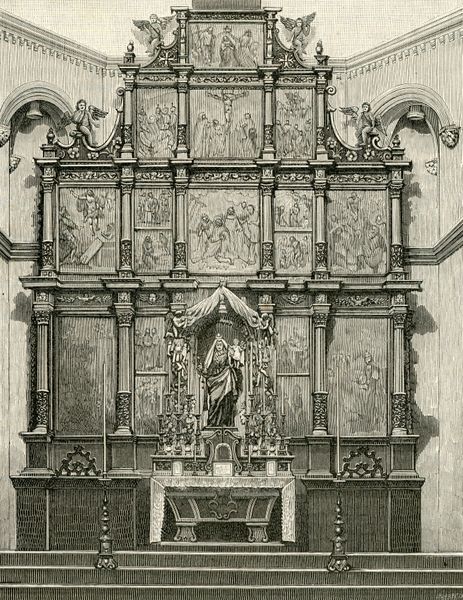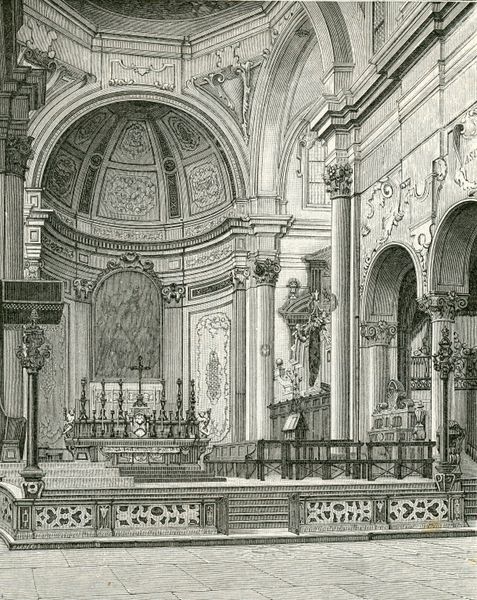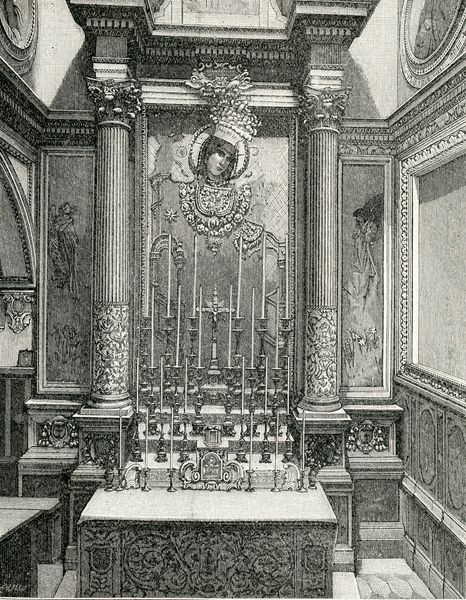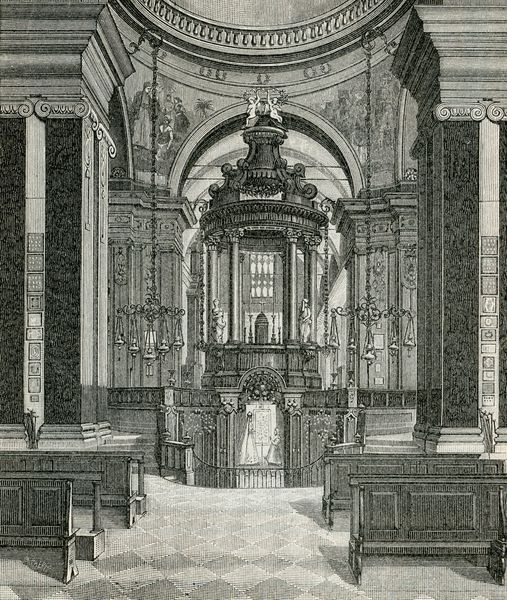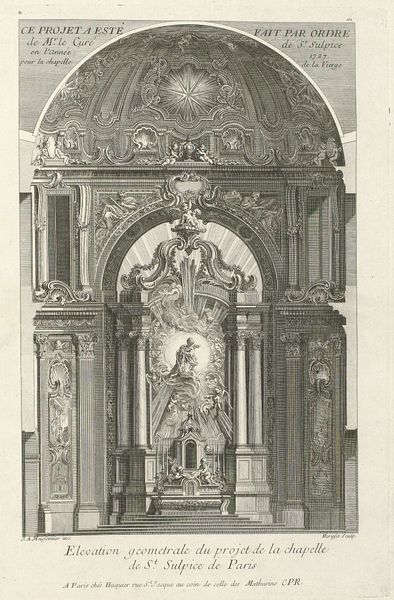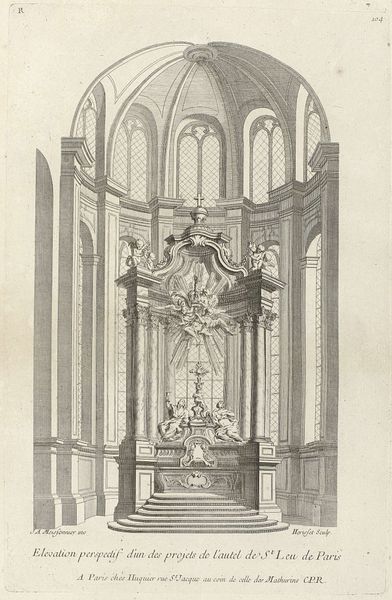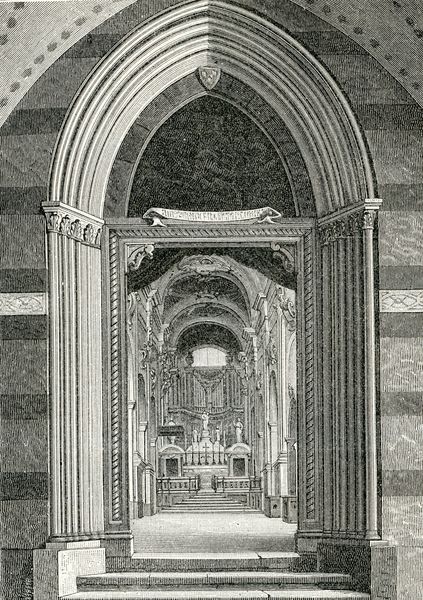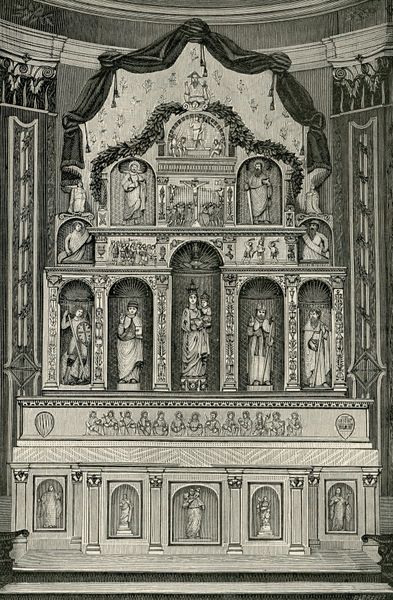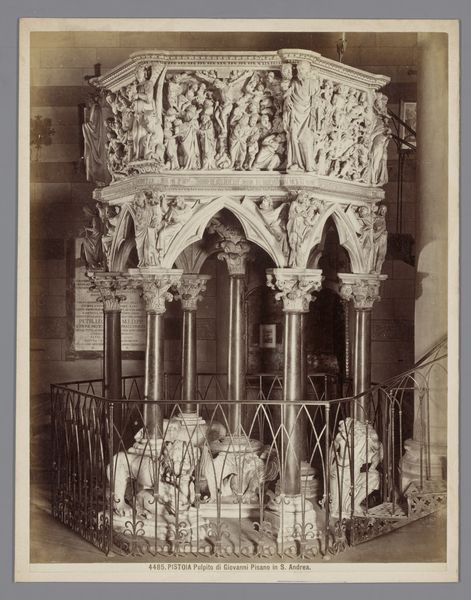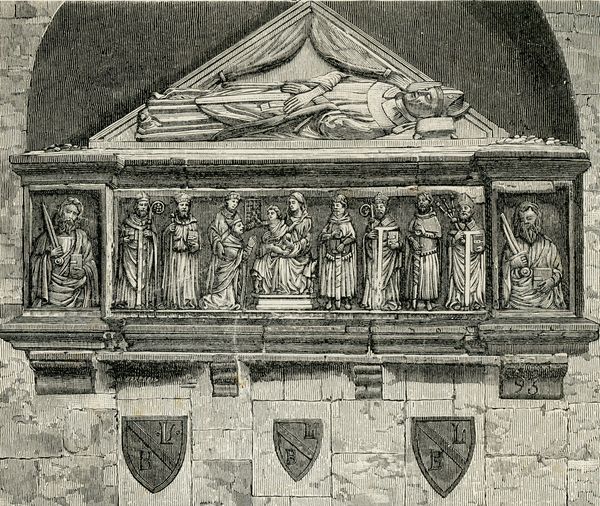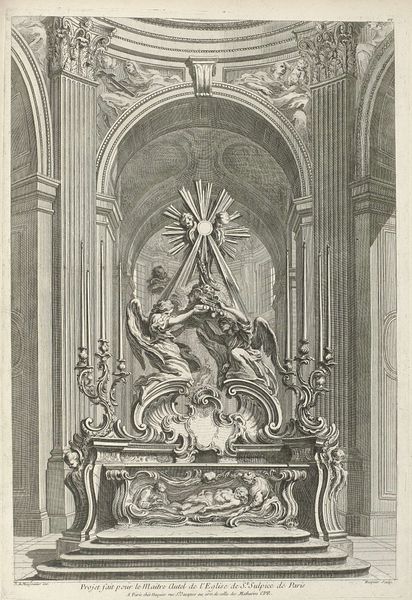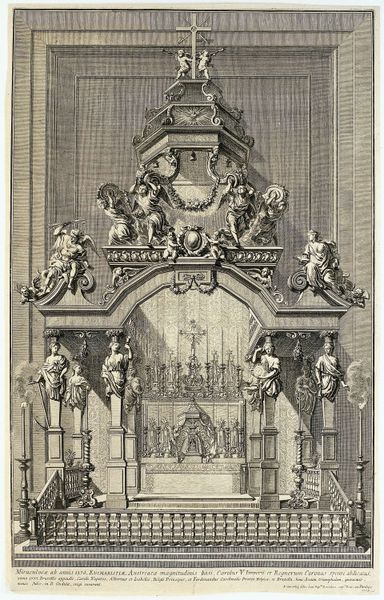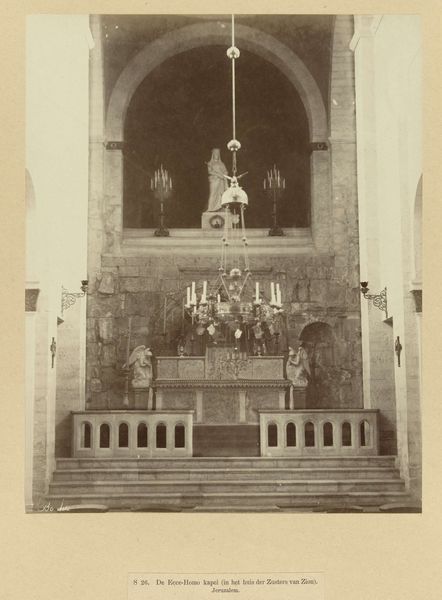
print, engraving, architecture
# print
#
old engraving style
#
italian-renaissance
#
engraving
#
architecture
Copyright: Public domain
Editor: We’re looking at “Altare Maggiore Nella Chiesa Di Montevergine,” created in 1898 by Giuseppe Barberis, using engraving techniques. The intricate details give it a real sense of grandeur, even in a monochromatic print. How do you interpret this depiction of the altar, particularly within its historical context? Curator: This print offers us a fascinating window into the late 19th-century perception and idealization of Renaissance aesthetics, especially its architectural designs. Barberis isn't just depicting an altar; he's participating in a larger cultural phenomenon. Consider the revival of interest in Renaissance art and architecture during that era – what social and political forces might have fueled that? Editor: That's interesting. Maybe a desire to reconnect with a perceived 'golden age' of Italian culture and identity? Curator: Precisely. This image was probably aimed at audiences nostalgic for the grandeur of the past but who consumed images through newly developing print technologies. Also, think about the role of the Catholic Church. How does depicting it like this, influence perceptions of its power or authority? Editor: So it's not just about the art itself, but how it functions as a cultural object in a specific moment. I guess displaying the altar this way reinforces the institution's historical importance? Curator: Exactly! The medium also emphasizes the artwork's role: reproducible, shareable, collectible. What impact might Barberis' work had on viewers that had never seen the actual church in Montevergine? Editor: It highlights how images can construct and reinforce collective memories. This has shifted my view completely! Curator: And remember, art's public role continually evolves. The same image creates varied cultural conversations across generations.
Comments
No comments
Be the first to comment and join the conversation on the ultimate creative platform.
